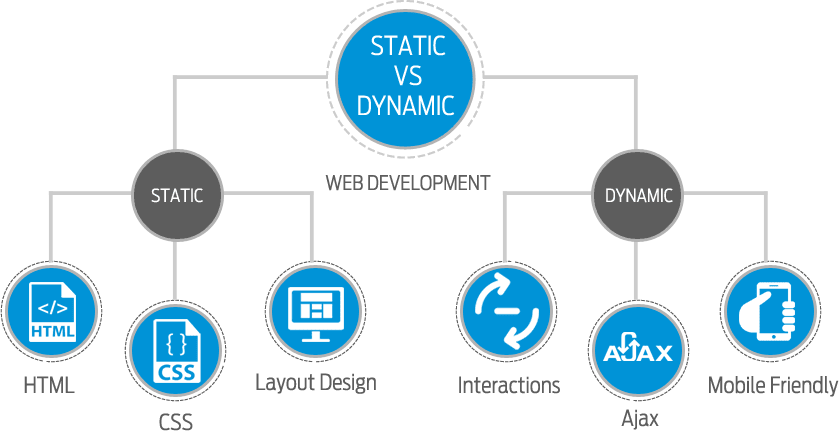Static Websites
A static website is one that has information that doesn’t change, however, in order to update content one has to edit the source code.
These websites are usually written in Plain HTML and CSS and what the code entails is displayed to the user.
Static websites are the simplest kind to build, moreover, they are recommended for small businesses that don’t require an update of their information very often.
Static websites are easier to make because;
- They require less coding
- They require less technical knowledge
However, static websites are less common nowadays because dynamic websites tend to have more useful functionalities.
The purpose of these types of websites is to provide the main information without complication. They are also inexpensive and easy to build and maintain.
Dynamic websites
On the other hand, Dynamic websites are those that contain information that changes over time and can display different content from the same source code.
These websites are not only written in HTML and CSS, but also use client-side and server-side scripting languages such as PHP, ASP, JavaScript, JQuery, Ruby on Rails and Cold Fusion. In addition, they normally have databases to add functionality to the website.
Dynamic websites usually use the same codes for the header, menu, sidebar, and footer for all the pages on the website.
Reasons to use Dynamic websites:
- If you want to use the same HTML codes for all the pages
- If you want to have a web app that people can comfortably use.
- If you want an interactive website that people can use and not just read (front-end and back-end)
These types of websites can serve many purposes. Those using Content Management Systems normally allow a single source code file to load content on many different pages. They also enable users to be able to log in through the front end to access personal information or services. In the case of online shops, you can create an account and view your products plus what is in your cart.
Dynamic Websites are expensive to develop, but offer numerous advantages;
- Ease to update information.
- They are used for e-commerce websites, forums, blogs, discussion boards, and intranet.
- You can upload documents and also download files.
- You can also grant permission to the users and administrators to add information to the website.
Merits and Demerits of Dynamic and Static Websites
If you need further solutions, talk to us, and we will guide you.
Discover more from Intela Designs
Subscribe to get the latest posts sent to your email.



